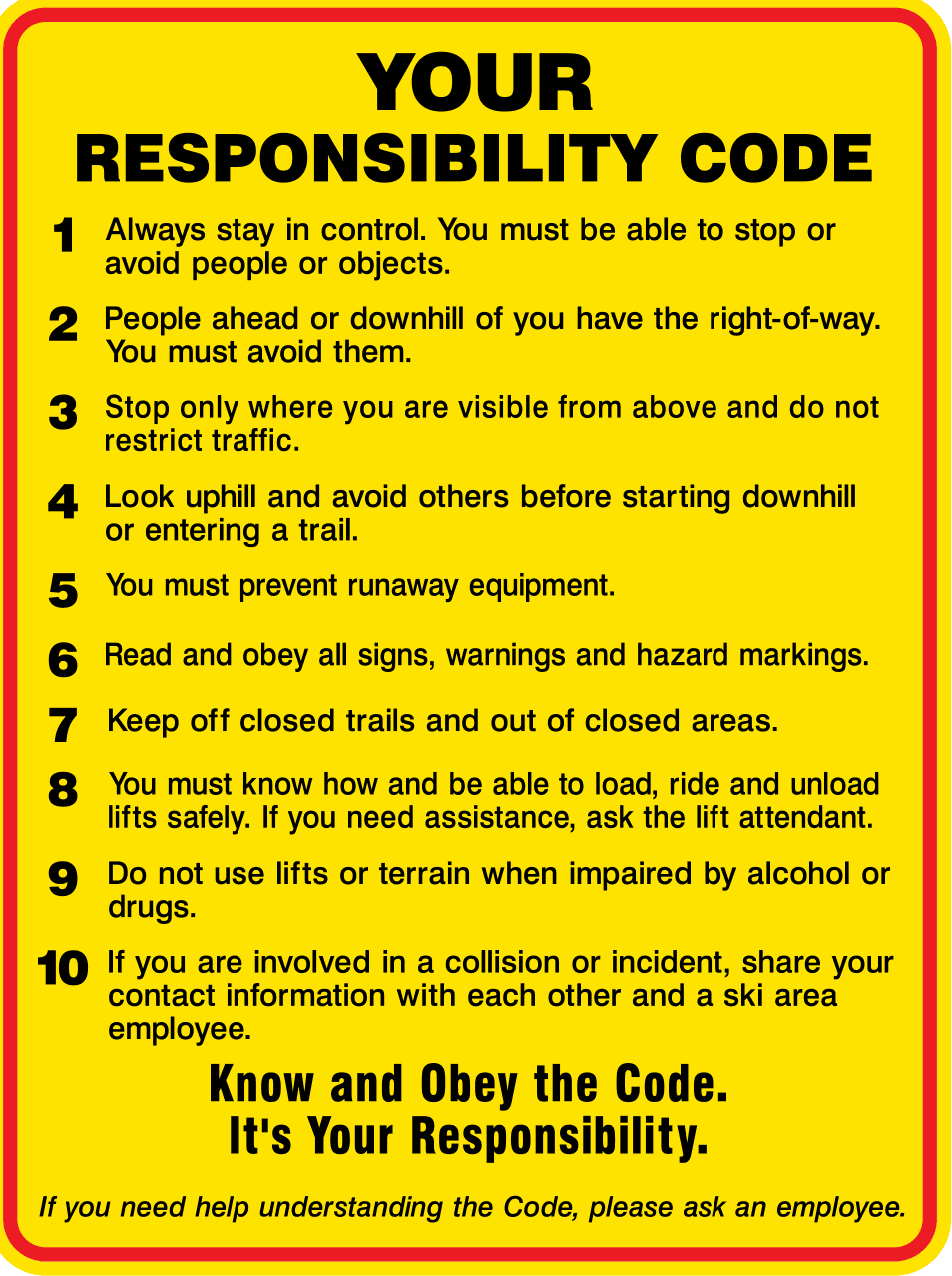
The Exciting Renewal Promotes Safety and Consistency Across North American Ski Areas
Effective immediately, Canada’s leading ski area associations have successfully updated the Alpine Responsibility Code for Canadian ski areas. To accommodate the growing ski industry and ensure consistent messaging across North America, the revised Code uses the same 10 points as the National Ski Areas Association’s (NSAA) Your Responsibility Code for American ski areas, updated in 2022.
This update has the agreement of and was made possible through the hard work of representatives from the Canada West Ski Areas Association (CWSAA), the Ontario Snow Resorts Association (OSRA), the Association of Quebec Ski Resorts (ASSQ), and the Atlantic Snow Resorts Association (ASRA).
The updated Alpine Responsibility Code includes stronger language to put the responsibility on you, the Alpine user, and to require those in a collision to provide contact information to a resort employee. The name Alpine Responsibility Code was retained to differentiate it from other Codes, such as the Cross Country Responsibility Code and Mountain Biker’s Responsibility Code.
The message is clear and direct, making it easier to read, understand, and comprehend, as evidenced by these 10 points:
- Always stay in control. You must be able to stop or avoid people or objects.
- People ahead or downhill of you have the right-of-way. You must avoid them.
- Stop only where you are visible from above, and do not restrict traffic.
- Look uphill and avoid others before starting downhill or entering a trail.
- You must prevent runaway equipment.
- Read and obey all signs, warnings, and hazard markings.
- Keep off closed trails and out of closed areas.
- You must know how and be able to load, ride, and unload lifts safely. If you need assistance, ask the lift attendant.
- Do not use lifts or terrain when impaired by alcohol or drugs.
- If you are involved in a collision or incident, share your contact information with each other and a ski area employee.
The changeover instruction from the associations is that the new signage will be implemented by Canadian ski areas throughout the 2023/24 winter season, with full adoption across Canada toward the beginning of the 2024 winter season.
National Ski Areas Association (NSAA) first developed the Skier Responsibility Code in 1962. In the last 60 years, the Code has undergone several revisions to stay in step with modern language and skiing behavior (including snowboarders, bikers, and everyone who enjoys the slopes.)
The latest version of Your Responsibility Code, introduced in the USA in 2022, grew from seven points to ten. The pre-existing seven points were revised, sometimes minimally, to modernize the language. One previous point was split into two. Two new points were added: one, to emphasize the importance of not skiing or riding under the influence of alcohol/drugs, and another, to let skiers and riders know what to do when they get into a collision or other on-mountain incident.
This season, ski areas across Canada will begin to adopt this language. However, making new signage and getting everyone on the same page takes some time. You can expect to see this updated Code used more widely over the next three seasons. In the meantime, take a moment to read this Code, talk with your kids or friends new to the slopes, and remember that staying in control is the best way to stay safe on the slopes.
Winter sports involve a risk of serious injury or death. Your knowledge, decisions, and actions contribute to your safety and that of others. Please ask any ski area employee if you need help understanding the Code.